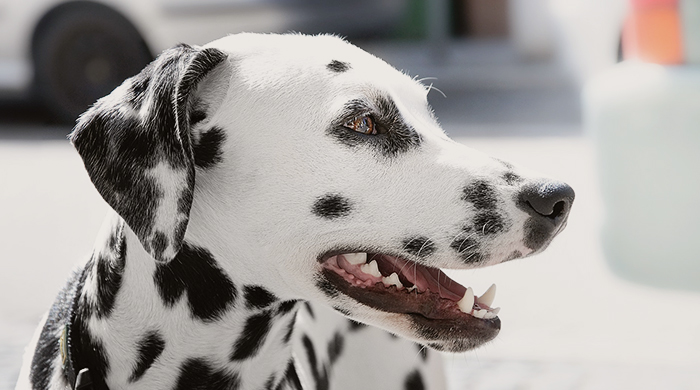Dental Care
Providing Dental Care for Cats & Dogs in Dallas, PA
Does your pet have breath that could stop a train in its tracks? That bad breath is more than a nuisance; it could be an indication of a severe health problem. Periodontal disease is common among dogs and cats, beginning with the accumulation of bacteria along the gums. Since pets are not regular brushers and flossers, that bacteria builds up quickly. The result is bleeding gums, damage to the surrounding connective tissue and if left too long, tooth loss. Bad breath is the first sign owners notice, but if they lift the pet’s lip, they will likely see red swollen gums, dark yellow/brown tartar or even loose, broken or missing teeth.
The owner is the pet’s best advocate for oral health, but our doctors at Back Mountain Veterinary Hospital, in Dallas, PA can help with advice. Beyond the bad breath, take stock of the pet’s eating habits. Is he/she only chewing on one side? Is he/she avoiding hard food or turning away from a favorite hard treat?
Many pet owners believe allowing pets to chew on sticks, rocks, or bones helps to keep the teeth clean. Unfortunately, repeatedly chewing on these hard surfaces can cause the tooth enamel to chip or may result in fracture. A deep fracture may expose the root canal, a painful situation leading to a tooth abscess. There are both digestible chew sticks and non-digestible chew toys that are designed specifically to help a pet keep their teeth clean, without being hard enough to damage the teeth.
If a pet will allow it, manual brushing of the teeth with a pet tooth brush or specially created finger brush using pet specific toothpaste will also help. Never use human toothpaste on a pet. Fluoride can be toxic to a pet if too much is ingested. If daily brushing is an impossibility, there are dental sprays and drinking water additives that help reduce tartar build-up. Routine dental exams and dental cleanings should be a part of all pet healthcare management. A dental exam includes measuring the depth of the gum pocket around each tooth with a periodontal probe. The average pocket depth is only a millimeter or two, but periodontal disease can create a pocket depth of 10 millimeters or more. Although it would be nice if pets would open up and say “Ahhh,” a thorough dental exam and cleaning has to be performed under anesthesia. Preanesthetic blood work is necessary to help identify any health issues that may complicate anesthesia. Bloodwork is required because the bacteria in tartar and plaque is more than just a cosmetic issue. All that bacteria in the mouth enters the bloodstream and circulates through the liver, kidneys and heart. If the bacteria load is high enough, these organs can be damaged.
In fact, medical studies have shown that it is nearly impossible to regulate the sugar level in a diabetic cat if the teeth have heavy tartar build-up. Studies have also linked the bacteria found in abnormal heart valves to oral bacteria in pets with dental disease. If left untreated, severe dental disease can lead to a very dangerous, life-threatening heart condition called bacterial endocarditis. All that bacteria in the mouth is constantly putting strain on the pet’s immune system as well, leaving them more vulnerable to other immune-mediated diseases as they age. In addition, anyone who has suffered through the shocking pain of a fractured tooth with root exposure, or has dealt with the throbbing ache of an oral abscess, knows how much comfort and relief is found once those issues have been resolved with proper dental care.
If a pet will allow it, manual brushing of the teeth with a pet tooth brush or specially created finger brush using pet specific toothpaste will also help. Never use human toothpaste on a pet. Fluoride can be toxic to a pet if too much is ingested. If daily brushing is an impossibility, there are dental sprays and drinking water additives that help reduce tartar build-up. Routine dental exams and dental cleanings should be a part of all pet healthcare management. A dental exam includes measuring the depth of the gum pocket around each tooth with a periodontal probe. The average pocket depth is only a millimeter or two, but periodontal disease can create a pocket depth of 10 millimeters or more. Although it would be nice if pets would open up and say “Ahhh,” a thorough dental exam and cleaning has to be performed under anesthesia. Preanesthetic blood work is necessary to help identify any health issues that may complicate anesthesia. Bloodwork is required because the bacteria in tartar and plaque is more than just a cosmetic issue. All that bacteria in the mouth enters the bloodstream and circulates through the liver, kidneys and heart. If the bacteria load is high enough, these organs can be damaged.
In fact, medical studies have shown that it is nearly impossible to regulate the sugar level in a diabetic cat if the teeth have heavy tartar build-up. Studies have also linked the bacteria found in abnormal heart valves to oral bacteria in pets with dental disease. If left untreated, severe dental disease can lead to a very dangerous, life-threatening heart condition called bacterial endocarditis. All that bacteria in the mouth is constantly putting strain on the pet’s immune system as well, leaving them more vulnerable to other immune-mediated diseases as they age. In addition, anyone who has suffered through the shocking pain of a fractured tooth with root exposure, or has dealt with the throbbing ache of an oral abscess, knows how much comfort and relief is found once those issues have been resolved with proper dental care.
If you believe your pet may be experiencing any of the issues just discussed, please don’t hesitate to contact us to arrange for a dental exam and cleaning.
